War of the Currents — Tesla vs. Edison
The confrontation between Nikola Tesla and Thomas Edison at the end of the 19th century can be called a real war, and it is not for nothing that their rivalry, in whose technology of transmission of electrical energy will become dominant in the world, is still called the "War of Currents".
The technology of Tesla's alternating current lines or Edison's lines is a real epochal controversy, the point that was only made at the end of 2007, with the final completion of the transition of New York to alternating current networks, in favor of Tesla.
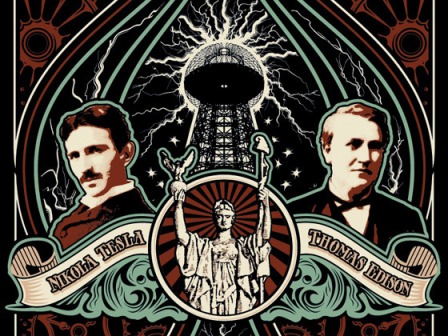
The first electric generators generating direct current allowed easy connection to the line and therefore to consumers, while alternators required synchronization with the connected power system.
Importantly, consumers designed for alternating current did not originally exist, and an effective modification of an induction motor designed directly for alternating current supply was invented. Nikola Tesla not until 1888, that is, six years after Edison started the first direct current power station in London.
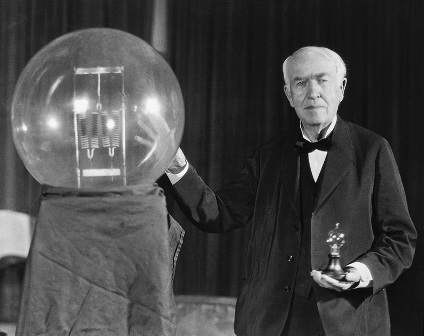
After Edison patented his system for generating and distributing direct current electricity in 1880, which included three wires—zero, plus 110 volts, and minus 110 volts, the great inventor of the light bulb was now confident that “he would make electric lighting so cheap that only the rich will use candles. »
So, as mentioned above, the first direct current power plant was launched by Edison in January 1882 in London, a few months later in Manhattan, and by 1887 more than a hundred Edison DC power plants were operating in the United States . Tesla was working for Edison at the time.
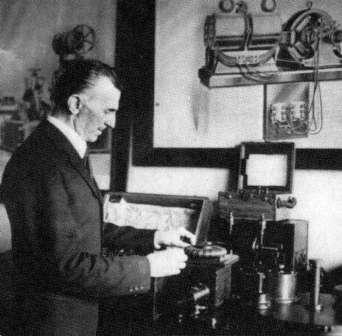
Despite the seemingly bright future of Edison's DC systems, they had a very significant drawback. Wires were used to transfer electrical energy over a distance, and as the length of the wire increases, as you know, its resistance increases and therefore there are inevitable heating losses. Thus, the problem required a solution—to reduce the resistance of the wires, to make them thicker, or to increase the voltage to reduce the current.
At that time, there were no effective methods of increasing the direct current voltage, and the voltage in the lines did not yet exceed 200 volts, so it was possible to deliver significant power only for a distance of no more than 1.5 km, and if the need to transfer electricity additionally, there are expensive wires with a large cross-section.
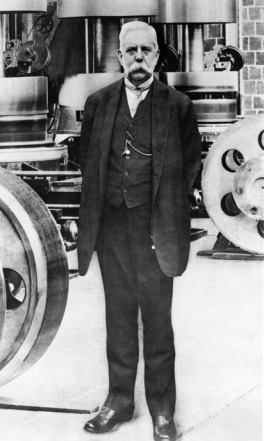
So, in 1893, Nikola Tesla and his investor, the entrepreneur George Westinghouse, received an order to illuminate a fair in Chicago with two hundred thousand light bulbs. It was a victory.Three years later, the first alternating current hydroelectric plant was built at Niagara Falls to transmit electricity to the nearby city of Buffalo.
In other words, by 1928 the US had already stopped developing direct current systems, fully convinced of the advantages of alternating current. After another 70 years, their dismantling began, by 1998 the number of direct current users in New York did not exceed 4,600, and by 2007 there were none left, when the chief engineer of Consolidated Edison symbolically cut the cable and the "War of the Currents" was over.
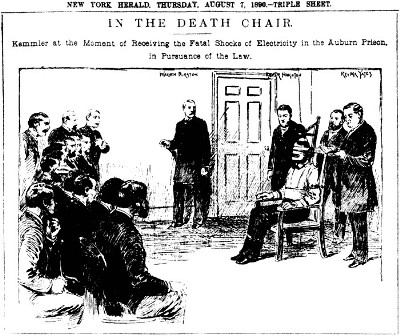
The switch to alternating current hit Edison hard in the pocket, and, feeling defeated, he began to sue for infringement of his patent rights, but the decisions of the judges were not in his favor. Edison did not stop, he began to organize public demonstrations where he killed animals with alternating current, trying to convince anyone and everyone of the dangers of using alternating current, and vice versa - the safety of his DC networks.
It eventually got to the point that in 1887, Edison's partner, engineer Harold Brown, proposed executing criminals with lethal alternating current. Westinghouse and Tesla did not supply generators for this and even hired a lawyer for his wife Kemmer, who was sentenced to death in the electric chair. But this did not save, and in 1890 Kemmler was executed by alternating current, and Edison saw to it that the bribed journalist threw mud at Westinghouse for this in his newspaper.
Despite Edison's continued bad PR, Tesla's AC system was destined for success.AC voltage can be easily and efficiently stepped up using transformers and transmitted over wires over distances of hundreds of kilometers without much loss. High voltage lines do not require the use of thick conductors, and the lowering of voltage in transformer substations has made it possible to supply low voltage to the consumer to supply AC loads.
It begins with the fact that in 1885 Tesla retired from Edison and together with Westinghouse acquired several Golar-Gibbs transformers and an alternator manufactured by Siemens & Halske, then with the support of Westinghouse he began his own experiments. As a result, a year after the experiments began, the first 500-volt power plant began operating in Great Barrington, Massachusetts.
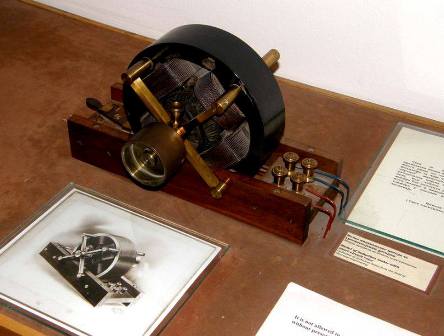
There were then no motors suitable for efficient AC power, and already in 1882 Tesla invented a polyphase electric motor, a patent for which he received in 1888, the same year the first AC meter appeared. The three-phase system was introduced in Frankfurt am Main at an exhibition in 1891, and in 1893 Westinghouse won a tender to build a power plant in Niagara Falls. Tesla believed that the energy of this hydroelectric plant would be enough for the entire United States.
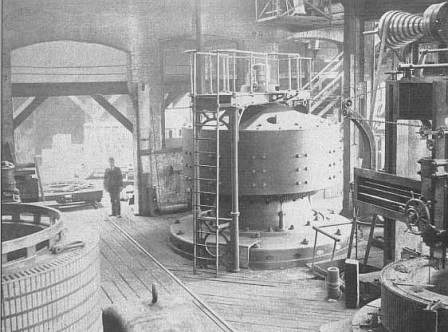
To reconcile Tesla and Edison, the Niagara Power Company commissioned Edison to build a power line from the Niagara Falls station to the city of Buffalo. As a result, General Electric, owned by Edison, bought the Thomson-Houston company, which manufactured AC machines, and began to manufacture them itself.
So Edison got the money again, but the anti-AC publicity didn't stop—he published and distributed in newspapers pictures of the execution by AC of Topsy the elephant trampling three circus workers at New York's Luna Park in 1903.
Direct and Alternating Current—Advantages and Disadvantages
Historically, direct current has been widely used to power series-excited electric motors in transportation. Such motors are good in that they develop high torque at a low number of revolutions per minute, and this number of revolutions can be easily adjusted by simply varying the DC voltage supplied to the motor field winding or by a rheostat.
DC motors are able to change their direction of rotation almost instantaneously when the polarity of the supply to the field winding changes. So, DC motors are still widely used on diesel locomotives, electric locomotives, trams, trolleybuses, on various elevators and cranes.
Direct current can be used to power incandescent lamps, various industrial electrolysis devices, electroplating, welding without problems; it is also successfully used to power sophisticated medical equipment.
Of course, direct current is useful in electrical engineering, since the corresponding circuits are easy to calculate and simple to control, it is not for nothing that by 1887 in the USA there were more than a hundred direct current power plants, the work on which was led by the company of Thomas Alva Edison. Clearly, DC is convenient when no conversion is needed, ie. increase or decrease in voltage, this is the main disadvantage of direct current.
Despite Edison's efforts to introduce direct current transmission systems, such systems also had a significant drawback—the need to use a large amount of materials and significant transmission losses.
The fact is that the voltage in the first DC lines does not exceed 200 volts, and electricity can be transmitted at a distance of no more than 1.5 km from the power plant, while a lot of energy is dissipated during transmission (remember The Joule-Lenz law).
If it was still necessary to transmit more power over a greater distance, thick heavy wires had to be used and this turned out to be very expensive.
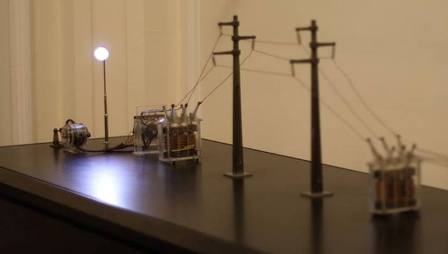
In 1893, Nikola Tesla began introducing his AC systems, which exhibited high efficiency due to the very nature of AC. Alternating current can be easily converted using transformers, increasing the voltage, and then it became possible to transfer electrical energy over many kilometers with minimal losses.
This is because when the same power is supplied through the wires, the current can be reduced due to the increase in voltage, therefore the transmission losses are less and the required cross-section of the wire is accordingly reduced. This is why AC grids have started to be introduced all over the world.
Asynchronous motors in machines and metal cutting machines, induction furnaces are supplied with alternating current; they can also power simple incandescent lamps and any other active load. Asynchronous motors and transformers revolutionized electrical engineering precisely because of alternating current.
If direct current is needed for some purpose, for example to charge batteries, now it can always be obtained from alternating current with the help of rectifiers.
